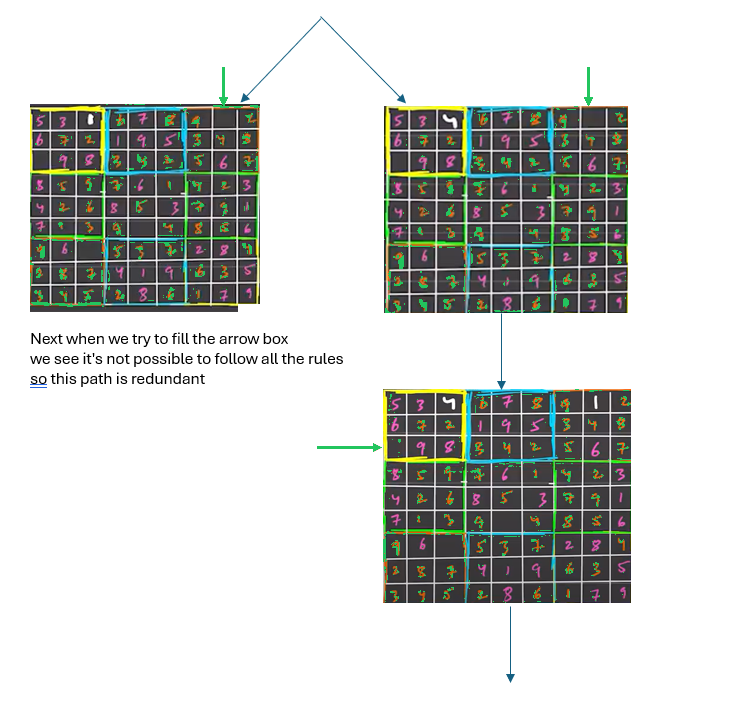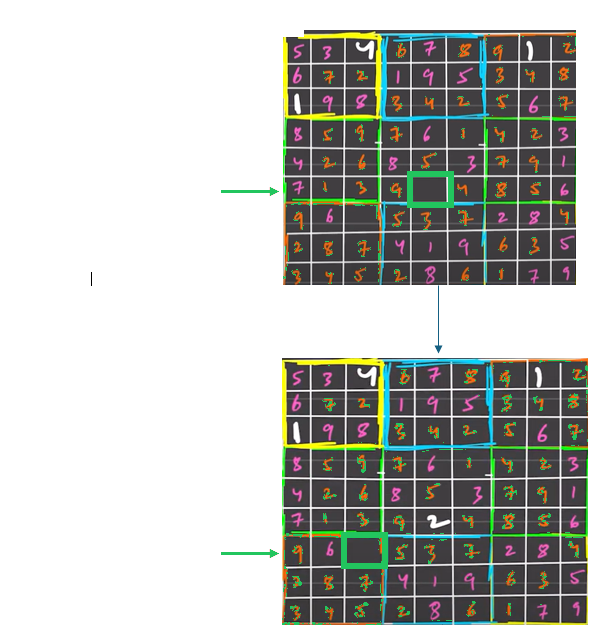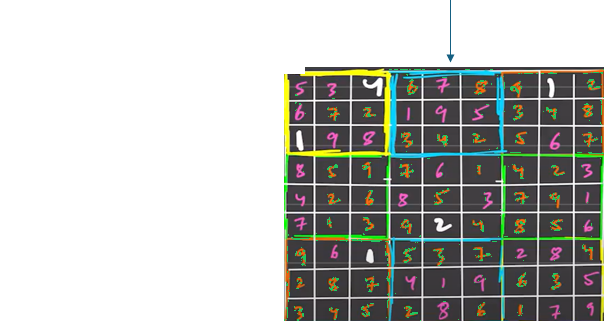Sudoko Solver
Recursion
FAQs (Hard)
Hard
- The concept behind solving Sudoku puzzles programmatically is often used in the real world as a common example of constraint satisfaction problems (CSPs)
- CSPs are mathematical questions defined as a set of objects whose state must satisfy a number of constraints or restrictions
- CSPs are applied in areas like AI planning and scheduling, routing problems, and even efficiently allocating resources in large data centers
- For instance, Google uses CSPs in their Or-Tools software to solve complex planning and resource allocation problems
Create a program that fills in the blank cells in a Sudoku puzzle to solve it.
Every sudoku solution needs to follow to these guidelines:
1) In every row, the numbers 1 through 9 must appear exactly once.
2) In every column, the numbers 1 through 9 must appear exactly once.
3) In each of the grid's nine 3x3 sub-boxes, the numbers 1 through 9 must appear exactly once.
Empty cells are indicated by the '.' character.
Constraints
- board.length = 9
- board[i].length = 9
- board[i][j] is a digit or '.'
- It is guaranteed that input board has only one solution.
Hints
- Use recursion to try filling in each empty cell. For each empty cell, try placing numbers 1 through 9. After placing a number, recursively attempt to solve the rest of the puzzle.
- Maintain data structures (e.g., sets or arrays) to track used numbers for each row, column, and sub-grid. This avoids repeatedly iterating over the grid to check constraints. Terminate as soon as the puzzle is solved, as only one solution exists for a valid Sudoku.
Company Tags
Airbnb
Visa
McKinsey & Company
ARM
Stripe
Bungie
Alibaba
Ernst & Young
Flipkart
Etsy
Medtronic
Zoho
Zomato
Broadcom
Riot Games
Goldman Sachs
Uber
Zynga
Databricks
Activision Blizzard
Freshworks
Optum
Micron Technology
Ubisoft
Texas Instruments
Google
Microsoft
Amazon
Meta
Apple
Netflix
Adobe



 ---!>
---!>